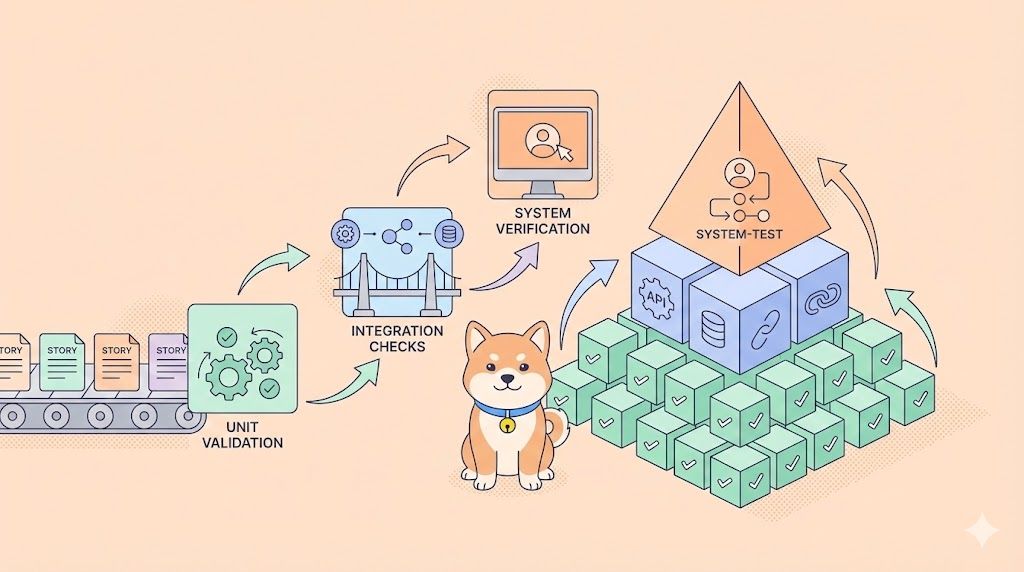JUnit and Cucumber represent two distinct approaches to software testing, each serving different purposes in the development lifecycle. While JUnit focuses on unit testing and technical verification, Cucumber emphasizes behavior-driven development (BDD) and collaboration between technical and non-technical stakeholders.
From automated CI/CD workflows to custom script creation and client SDK generation, Apidog empowers developers with comprehensive API management capabilities.
Experience the full potential of modern API development with Apidog's extensive feature set today by clicking the button below!

JUnit Overview
JUnit is a fundamental unit testing framework for Java that plays a crucial role in test-driven development. As part of the xUnit family of testing frameworks, it promotes the "first testing then coding" methodology. The framework incorporates annotations for test method identification, comprehensive assertion capabilities for result verification, and robust test runners for automated execution. Through these features, JUnit enables developers to receive quick feedback and maintain organized test suites.
Benefits of JUnit
JUnit significantly enhances development workflows by increasing developer productivity and ensuring code stability. Immediate feedback mechanisms substantially reduce debugging time and eliminate the need for manual test intervention. The framework's sophisticated test suite organization capabilities enable teams to maintain a clear structure in their testing approach. Furthermore, its comprehensive reporting mechanisms provide valuable insights into test results and code coverage.
Cucumber Overview
Cucumber serves as a behavior-driven development framework that bridges the gap between technical and non-technical stakeholders. It utilizes plain English text to describe test scenarios and software behavior. The framework's architecture incorporates the Gherkin syntax for creating human-readable test scenarios while supporting multiple programming languages and seamlessly integrating with various development tools. Its modular design allows for component reuse and maintains living documentation capabilities.
Benefits of Cucumber
Cucumber transforms the testing landscape by fostering collaboration between technical and non-technical team members through its accessible, readable test scenarios. The framework's ability to reuse step definitions increases efficiency and reduces redundancy in test creation. Its seamless integration with CI/CD pipelines ensures smooth deployment processes, while simultaneously serving as living documentation that keeps all stakeholders informed about system behavior and requirements.
Comparison of Use Cases
JUnit Use Cases
JUnit excels in scenarios focused on unit testing individual code components and verifying technical implementations at the method level. It provides robust support for regression testing and proves particularly effective for integration testing within Java environments. The framework's strength lies in its ability to thoroughly test isolated units of code and ensure their proper functionality.
Cucumber Use Cases
Cucumber demonstrates its value in behavior-driven development scenarios and comprehensive end-to-end testing. It excels in acceptance testing and cross-functional testing scenarios where multiple system components need verification. The framework particularly shines in projects requiring extensive stakeholder collaboration, where clear communication of requirements and expected behavior is crucial.
Technical Implementation
JUnit Implementation
JUnit implementation revolves around creating test cases using Java, with test methods properly annotated to define their purpose and behavior. Developers must establish clear assertions for expected results and organize their tests into logical suites. The execution of these tests can be managed through IDE integration or build tools, providing flexible options for different development environments.
Cucumber Implementation
Implementing Cucumber involves creating feature files using Gherkin syntax that describes expected system behavior. These descriptions are then mapped to executable code through step definitions in the chosen programming language. The process requires careful integration with testing frameworks and appropriate configuration of test runners to ensure proper execution and reporting.
Framework Selection Guidelines
Choose JUnit When
The decision to use JUnit should be driven by specific technical needs, particularly when focusing on unit testing Java code and requiring fast test execution. It's especially suitable for projects where technical teams are the primary stakeholders and strong IDE integration is necessary. JUnit's method-level testing capabilities make it ideal for detailed component verification.
Choose Cucumber When
Cucumber becomes the preferred choice when implementing behavior-driven development approaches and requiring clear communication channels with stakeholders. It's particularly valuable in scenarios where living documentation is essential and when testing complex business scenarios that span multiple system components. The framework's cross-functional testing capabilities make it suitable for comprehensive system verification.
Common Challenges and Limitations
JUnit Challenges
While powerful, JUnit's limitation to the Java programming language can restrict its applicability. The framework requires significant technical expertise to implement effectively, and its focus on technical testing may not adequately address business-oriented testing needs. As test suites grow, managing complexity can become challenging.
Cucumber Challenges
Teams adopting Cucumber often face a steep learning curve when mastering the Gherkin syntax. The framework's test execution tends to be slower compared to unit tests, and the initial setup requires more resources. Additionally, debugging options may be limited, and the framework may not be suitable for all testing scenarios.
Integration Capabilities
Both frameworks demonstrate robust integration capabilities within modern development ecosystems. JUnit seamlessly connects with popular build tools like Maven and Ant, while maintaining strong IDE integration, particularly with Eclipse. Cucumber offers extensive integration options across various programming languages and CI/CD tools, enabling flexible implementation in diverse development environments.
Comprehensive API Tool - Apidog
If you require a modern testing tool for checking your application, make sure to consider using Apidog.

Transform your API development workflow with Apidog's all-in-one platform. From API design and testing to documentation and mock services, this comprehensive toolkit streamlines every aspect of API management.
Come explore Apidog's powerful features and discover how it can enhance your development process!
Design APIs Like a Pro
Turn your API ideas into reality with Apidog's seamless development platform. Create and launch professional APIs through a streamlined, user-friendly interface that simplifies the entire development journey from concept to deployment.


Start building your API by accessing the configuration panel through the "New API" button. The interface guides you through essential setup steps:
- Define your API's communication protocols by selecting HTTP methods like GET and POST, which determine how client applications interact with your service.
- Define unique URL paths that act as gateways to specific API functionalities and services.
- Customize URL parameters to control how data is accessed and modified through your API endpoints.
- Create clear endpoint descriptions and specifications to help other developers understand and properly integrate your API services.
This setup process creates a blueprint for how other applications will interact with your service.
Create API Documentation With Apidog
Once you have finished your API design with Apidog, you can begin creating API documentation.

First, click the Share Docs logo on the left tab, and click the + New button.

Complete your API setup by reviewing documentation configurations. Strengthen access control through password requirements and personalize visibility settings with a custom URL.
Once you've verified all the details, click Save to keep your configuration.

Once your API documentation is complete, you can:
- Preview the documentation from a user's perspective
- Share access by distributing the documentation link
- Update the documentation content as needed
- Delete the documentation if required

Conclusion
While JUnit and Cucumber serve different testing purposes, they can be complementary in a comprehensive testing strategy. JUnit excels in unit testing and technical verification, while Cucumber shines in behavior-driven development and stakeholder collaboration. The choice between the two depends on specific project requirements, team composition, and testing objectives.
![[Guide] A Detailed Comparison Between JUnit VS Cucumber](https://assets.apidog.com/blog/2024/10/junit-vs-cucumber-cover.png)


